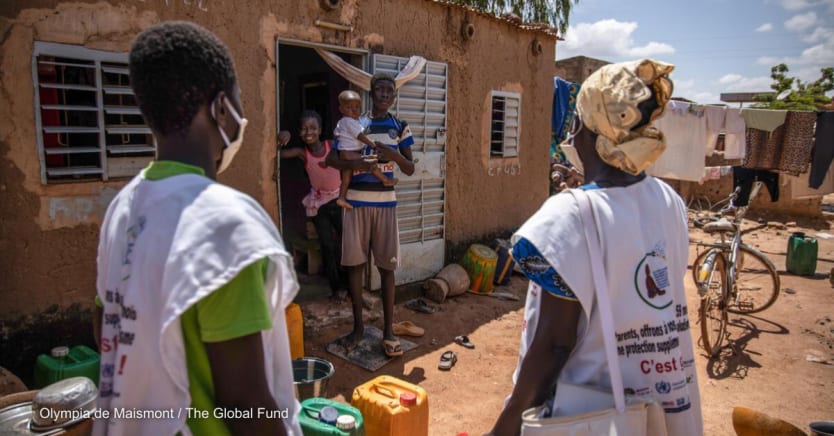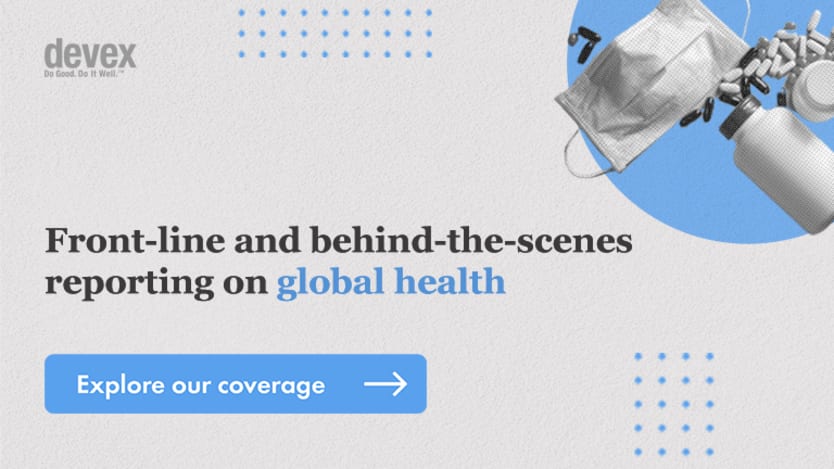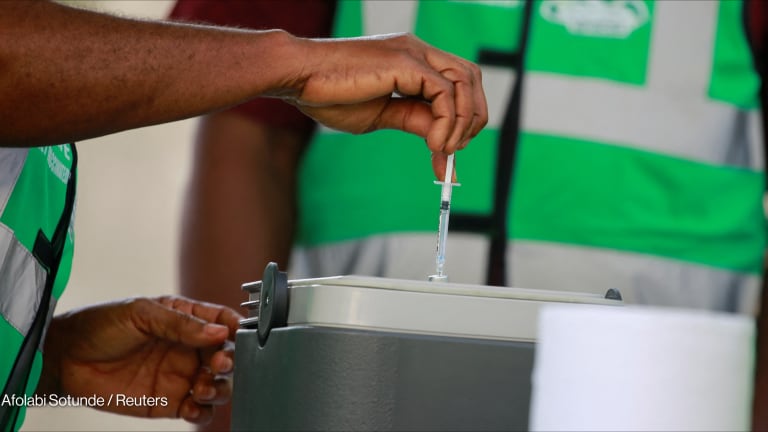
When the coronavirus pandemic hit in early 2020, the Global Fund to Fight AIDS, Tuberculosis and Malaria launched a funding mechanism to help protect the gains made in the fight against the three diseases. But the damage from the pandemic was still significant.
Sign up for Devex CheckUp
The must-read weekly newsletter for exclusive global health news and insider insights.
“It was like being hit by a hurricane, you can reduce the level of damage but you can't stop there being any damage,” Peter Sands, executive director at Global Fund, told Devex.
In its latest “Results Report,” the Global Fund stated there were huge declines in HIV and TB prevention and treatment services in 2020. HIV testing declined by 22% — the equivalent of 30 million people. Voluntary medical male circumcision, which helps in reducing HIV transmission via heterosexual sex, fell by 27%, a more significant drop compared to 14% in 2019.
One million fewer people were also treated for TB. Those on treatment for drug-resistant TB fell by 19%, a serious setback after the fund reported a 13% increase in 2019. Those on treatment for extensively drug-resistant TB also dropped further, from 13% in 2019 to 37% in 2020.
Interventions designed to prevent malaria were less affected, although the report still found the number of suspected cases tested for malaria fell by 4.3%, after increasing by 11% in 2019.
But the world may not have seen the worst yet. The impact of the pandemic on TB cases and deaths “can be potentially devastating over the coming years,” according to the report.
“I think the other sobering thing of course is that this report is only talking about what happened in 2020. And obviously, the crisis isn't over. So there will be more impact in 2021, particularly in the light of the surges driven by the delta variant of COVID,” Sands said.
“It doesn't take a rocket scientist to work out that the needs for HIV, TB, and malaria are going to be greater than they were.”
— Peter Sands, executive director, Global Fund to Fight AIDS, Tuberculosis and MalariaThe Global Fund saw some programmatic interventions picking up in early 2021, only to be knocked down again by surges in COVID-19 cases due to the delta variant. For example, TB case notifications began to rise sharply toward the end of 2020 and early 2021 in India. But by April, a deadly second wave of COVID-19 again knocked off course the country’s TB program.
“So we have seen improvements, but we've also seen deteriorations,” Sands said.
“I think the thing that most worries me right now is that some of the countries — and I will include most of Africa here — that were less hard hit in 2020 by COVID are now being pretty hard hit. And that will inevitably have a knock-on impact on the other diseases,” he added.
All these mean the world is further off track in meeting the targets set out for the three diseases in the Sustainable Development Goals. To get back on track will require steeper reductions in deaths and infections, more money, innovations, and effective execution of interventions, Sands said.
“We also need to make our partnerships with technical partners, with civil society and the private sector even more effective, because the reality is we are going to have to extract the maximum impact from every dollar,” he added.
The Global Fund has yet to finalize its investment case for its funding replenishment scheduled in 2022, but Sands said “it doesn't take a rocket scientist to work out that the needs for HIV, TB, and malaria are going to be greater than they were.”
A focus on the now
Amid the pandemic, there have been numerous calls for the fund to take on a more prominent role in pandemic preparedness and response.
Sands said the organization is already playing a very significant role, as the largest provider of grant financing for COVID-19 tests, treatments that include oxygen, and personal protective equipment. He said the pandemic has shown that the health infrastructure and capacities the fund and partners have put in place to address HIV, TB, and malaria over the years have proved to be useful in the COVID-19 response.
“So, in a sense, we will inevitably play a role in pandemic preparedness and response, because we were set up to fight pandemics. HIV/AIDS was the last big pandemic to strike humanity,” he said.
“Now quite what the parameters of that role end up being, and how our role fits in with partners and so on, I think it still has to be worked out through the [Global Fund] board's own deliberations on the [Global Fund] strategy, but also the broader debate being carried out through the G-7 and G-20,” Sands added.
But his primary focus at the moment is how to deal with the current COVID-19 crisis. The Global Fund needs money now to continue providing grant financing to low- and middle-income countries battling COVID-19 and mitigating its knock-on impacts on the three diseases.
Global Fund has so far disbursed over $3 billion via its COVID-19 response mechanism, or C19RM. By the end of September, the fund anticipates it will have disbursed over $4 billion — exhausting all of the mechanism’s available resources.
“We're going to need more money for C19RM, and we kind of need it now, because ... we will have fully deployed all the money we currently have available for C19RM by the end of September,” Sands said.
“I think we're still in a situation where, I would argue, the world isn't thinking in a sense big enough about the scale of what is required to beat COVID-19,” he added. “We're not going to defeat COVID-19 with just vaccines.”









